Intel Processors with Unlocked Multiplier Core i7-875K and Core i5-655K Review

In a few days Intel is going to expand their overclocking-friendly product line and to offer two new LGA1156 processors with unlocked clock frequency multipliers. The especially intriguing thing about these CPUs is that they won’t belong to Extreme Edition series and their price will be quite affordable.
Overclocking is no longer an occupation for the elite. Today it is a mass phenomenon that involves not only a wide range of computer enthusiasts, but also computer hardware makers. The army of overclockers has become so numerous, that even such giants as Intel can’t disregard them any longer. As a result, over the past few years we have the chance to witness how different computer hardware manufacturers not only adapt their components for overclockers’ needs, but also start making special overclocker products. For example, in the processor market these solutions would be processors with unlocked clock frequency multiplier. They allow increasing their clock frequency easily, which will eliminate any additional requirements to the rest of the platform and in the end may let you set unprecedented overclocking records.
AMD has been especially favorable towards overclockers until recently. They are offering several processors within their Black Edition family (with unlocked clock frequency multiplier) that belong to different price categories. Moreover, this company was even offering hand-picked TWKR processor modifications that could work at a pretty aggressive core voltage setting. As for Intel, they used to be much more conservative to overclocking fans: the only special products that company had been offering over the past few years were only extremely expensive 1000-dollar CPU models with unlocked clock multipliers.
However, the current situation in the market and the community interest towards overclocking was reason enough for the microprocessor giant to start taking action. About a year ago Intel undertook an experiment aimed at exploring the demand: they rolled out an inexpensive LGA775 Pentium E6500K processor with an unlocked frequency multiplier in a regional Chinese market. This experiment must have produced a highly positive result, because Intel decided to expand this initiative. And very soon, to be more exact at the upcoming Computex computer show Intel decided to announce a couple of affordable overclocker processors with unlocked clock frequency multipliers for the most current LGA1156 platform.
They will be launching a quad-core Core i7-875K and a dual-core Core i5-655K processors. In terms of their formal specifications, these CPUs will become analogues to the long shipped Core i7-870 and Core i5-650 processors. But unlike their predecessors, the new CPUs will boast an unlocked clock frequency multiplier that will offer additional overclocking opportunities. It is especially nice that Intel is not going to position overclocker models as exclusive solutions, so they will be selling at a very affordable price differing from that of the regular models by only 20-25%.
As a result, computer enthusiasts will have a pretty wide range of processors with unlocked clock frequency multiplier for almost any current platform:
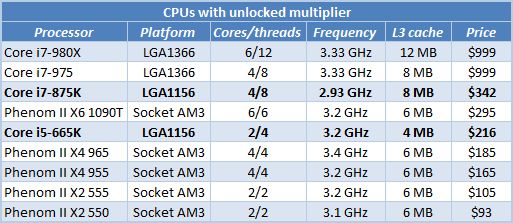
As we see, the new processors fit quite nicely among the already existing overclocker solutions. Nevertheless, the launch of Core i7-875K and Core i5-655K will hardly cause any serious changes in the processor market: overclockers have been using Core i7-870 and Core i5-650 quite successfully so far and the new processors cost more than these two anyway. Yes, they can be overclocked by simply changing the clock frequency multiplier, but overclocking by raising the base clock also produces very decent outcome in most cases. In other words, the launch of Core i7-875K and Core i5-655K is an excellent move for the company image that should please competitive enthusiasts who deal with extreme overclocking and face mainboard instability caused by excessive increase in the back clock frequency quite often. But do we really need these processors in mainstream overclocker systems?
Closer Look at Core i7-875K and Core i5-655K Specifications
In terms of their formal specifications, these new overclocker processors can’t boast any features that would distinguish them remarkably from their fellow CPUs. Clock frequencies, number of computational cores, cache-memory size, brand name technologies, thermal design power – everything is exactly the same as by the well-familiar Core i7-870 and Core i5-650.
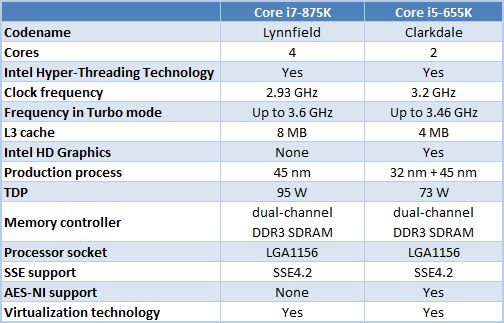
It is also hard to notice any differences from the existing models even in the screenshots from diagnostic utilities. For example, in CPU-Z the new processors stand out only due to an identification line with a name in it:
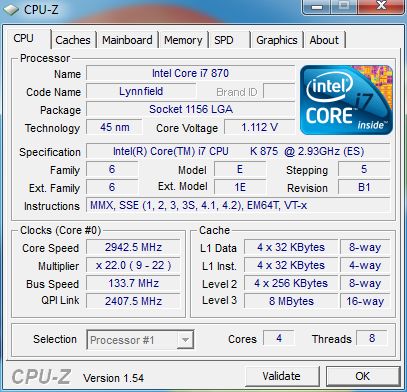
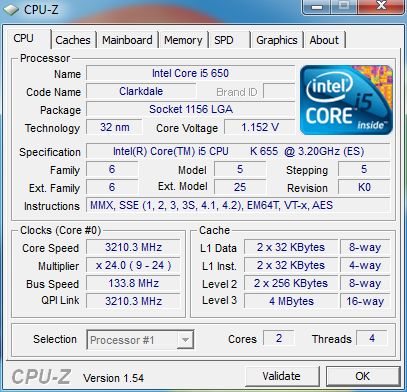
Note that Core i7-875K is based on B1 processor stepping, while Core i5-655K – on C2 processor stepping. It means that these CPUs use the same semiconductor die versions as the common mainstream processor models. Therefore, new overclocker processors will hardly be able to offer their owners any special frequency potential, and their only distinguishing feature is an unlocked clock frequency multiplier.
Nevertheless, Core i7-875K and Core i5-655K are special. They do not replace any solutions but add to the existing LGA1156 processor lineup. To stress this idea Intel will ship new processors in special packaging with highlighted “unlocked” word in the name.
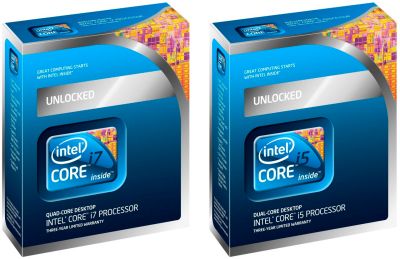
By the way, overclocker processors will come without the traditional boxed cooler. Intel was absolutely right to believe that those enthusiasts who go for a CPU with an unlocked clock multiplier would definitely prefer to pick a cooling system themselves.
Intel officials promise that new processors won’t have any compatibility issue with any of the existing mainboards. This isn’t surprising at all, as there is actually nothing really new about them. However, in order to get full access to the multiplier adjustment options, it would be best to update the mainboard BIOS first.
Overclocking Experiments
Although the new Core i7-875K and Core i5-655K processors with unlocked clock multipliers do not promise any overclocking break-through, it is still very interesting to check out their frequency potential. To test the new CPUs in real life we put together the following testbed:
- ASUS P7P55D Premium mainboard (LGA1156, Intel P55 Express);
- 2 x 2 GB, DDR3-1600 SDRAM, 9-9-9-24 (Kingston KHX1600C8D3K2/4GX);
- ATI Radeon HD 5870 graphics card;
- Western Digital VelociRaptor WD3000HLFS HDD;
- Thermalright Ultra-120 eXtreme CPU cooler with Enermax Everest fan;
- Tagan TG880-U33II PSU (880 W).
The primary goal of our today’s test session will be to determine the maximum frequency that can be achieved during overclocking of Core i7-875K and Core i5-655K processors by changing their frequency multiplier.
Core i7-875K
When we installed this processor into our testbed, we immediately noticed a few changed that occurred in the mainboard BIOS.
The “CPU Ratio Setting” parameter responsible for the clock frequency multiplier now allowed setting any value from 9x to 63x, but this was an anticipated consequence. It was much more interesting to see an additional “TurboMode x-Core Ratio Offset” parameter that offered complete control over Turbo Boost technology.
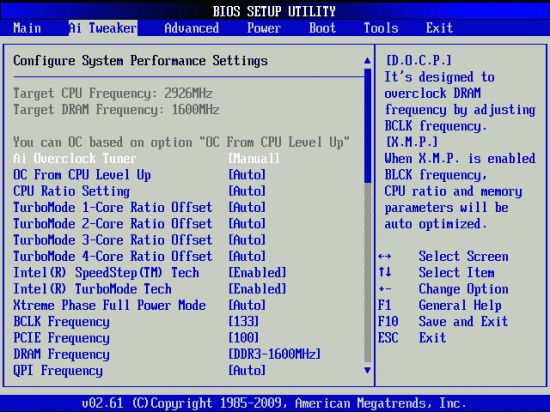
These settings allow managing the processor frequency intervals within Turbo Boost Technology. In other words, if you have a CPU with an unlocked clock frequency multiplier, you can manually set the scale with which its clock frequency will increase in Turbo mode when 1, 2, 3 or 4 cores are active.
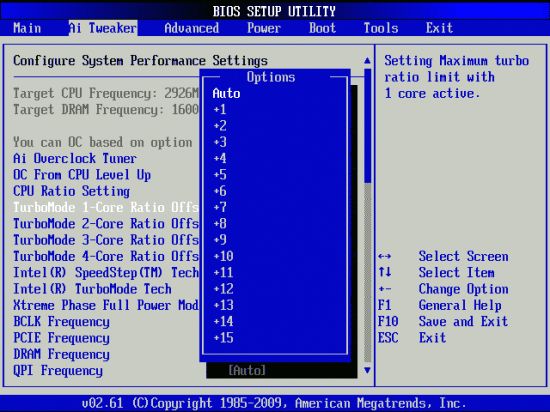
Unfortunately, this was the last pleasant surprise. Core i7-875K doesn’t offer any additional multipliers for the DDR3 SDRAM frequency, or doesn’t allow changing the Uncore frequency of the processors. It means that the Uncore frequency is strictly connected with the base clock (BCLK) and equals 2.4 GHz at the nominal BCLK of 133 MHz. As for the memory frequency, you can only choose from 800, 1066, 1333 and 1600 MHz if you use default BCLK.
Now let’s go directly to overclocking. Core i7-875K offers total access to the clock multiplier. If you increase the multiplier, it only affects the work of the processor computational cores, all other sub-systems remain untouched. So, overclocking algorithms is extremely simple: it doesn’t require any changes in the memory frequency or any increase in the frequency of the processor Uncore part. Just raise the clock multiplier and increase the processor core voltage accordingly.
When the CPU Vcore increases to 1.35 V that is considered a pretty safe level when only air-cooling is used, we can get our CPU to run stably at 4.0 GHz.
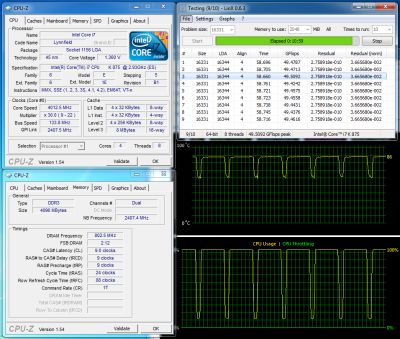
This is a normal, but not outstanding result for a CPU on Lynnfield core. However, we didn’t expect anything else, because Core i7-875K is just another representative of a well-familiar processor family. So, there is only one remarkable thing about the obtained result: we didn’t have to increase the base clock (BCLK), which means there was no additional impact on the mainboard.
Core i5-655K
Just like Lynnfield, the unlocked dual-core Clarkdale also offers complete access not only to the “base” clock frequency multiplier, but also to Turbo Boost technology allowing the processor to pick any multiplier depending on the utilization of each CPU core. In other words, in this respect it has the same functionality as Core i7-875K. However, unlike the quad-core CPU, Core i5-655K also offers extended configuration options for the memory frequency.
When regular non-overclocker Clarkdale processors use nominal base clock (BCLK) of 133 MHz, they allow clocking the memory as DDR3-800, DDR3-1066 or DDR3-1333. Lynnfield processors, and Core i7-875K in particular, also add DDR3-1600 to this list. The multiplier used for the memory frequency in Core i5-655K is fully unlocked, so the memory controller in this processor can also clock the memory as DDR3-1866 or DDR3-2133 without increasing the BCLK any higher.
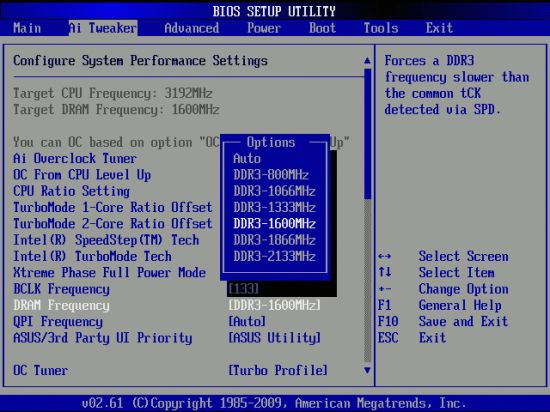
As for the actual overclocking, when we increase the CPU Vcore to 1.35 V, Core i5-655K processor can work with a 33x multiplier, i.e. at 4.4 GHz frequency. In his case the system remained fully stable, which we confirmed by running a complete LinX 0.6.3 stability test.
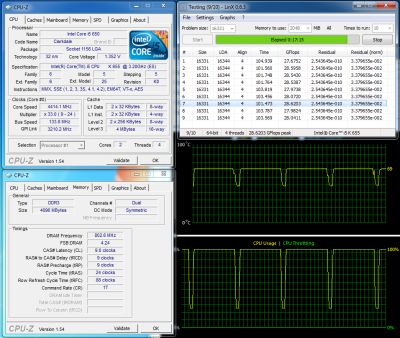
And one more time we see quite common overclocking result, although we did use a special overclocker CPU in our experiment. This proves once again that Intel doesn’t hand pick semiconductor dies in any specific way for their new unlocked processors. The frequency potential of Core i7-875K and Core i5-655K is perfectly comparable with that of other Lynnfield and Clarkdale CPUs. So, they can’t boast any other obvious advantages besides the unlocked multipliers.
Therefore, the use of new Core i7-875K and Core i5-655K processors in overclocker platforms can only be justified when overclocking by raising the multiplier doesn’t allow to fully uncover the frequency potential of the processor. And that may only occur in two cases. First if you have a “bad” mainboard that doesn’t have the necessary options for adjustment of BCLK frequency, and memory and Uncore voltages. And second if you perform extreme CPU overclocking, i.e. when the CPU frequency increases by more than 50%, which requires raising the BCLK clock far beyond 200 MHz barrier. In this case stability issues caused by the mainboard are inevitable.
What Is Better: BCLK Frequency vs. Multiplier
When Core i7-875K and Core i5-655K start selling, most LGA1156 overclocker systems will allow processor overclocking by raising the clock generator frequency or changing the clock frequency multiplier (we are only talking about systems using non-extreme cooling methods). Of course, it is quite logical to wonder: which overclocking approach would be preferable?
We decided to clarify this matter and test Core i7-875K processor working at 4.0 GHz frequency in two situations: when its frequency is achieved by pushing the BCLK clock to 200 MHz and when BCLK stays at its default frequency of 133 MHz, but the multiplier is increased instead. I have to say that during overclocking by raising the clock generator frequency we even lowered the multiplier a little bit (to 20x). It can be done to any system (even the one using a CPU with locked multipliers) in order to match the memory frequency accordingly. As a result we ended up testing two similar systems for our comparison:
- Core i7-875K processor at 4.0 GHz = 20 x 200 MHz, DDR3-1600 memory (9-9-9-24-1T)
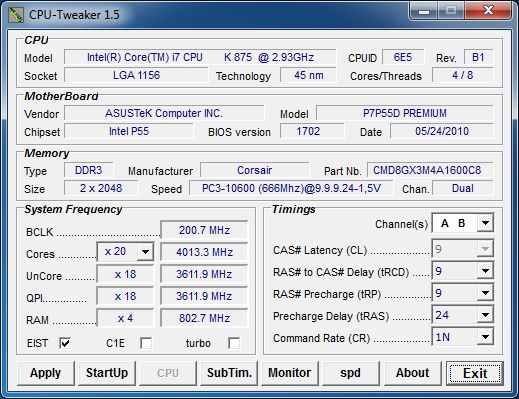
- Core i7-875K processor at 4.0 GHz = 30 x 133 MHz, DDR3-1600 memory (9-9-9-24-1T)
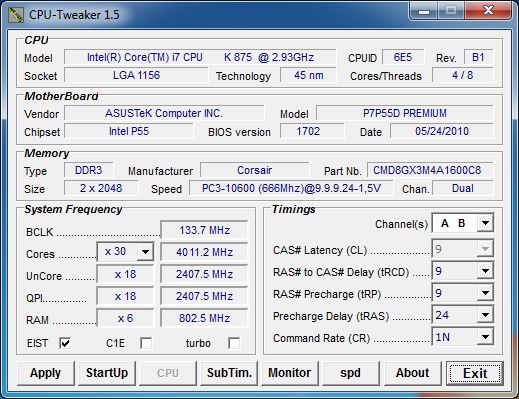
You can see from the screenshots above that different approaches to overclocking result in different Uncore and QPI bus frequencies. When BCLK is increased beyond the default 133 MHz, the frequency of these two knots increases proportionally. These are the factors that determine the performance differences:
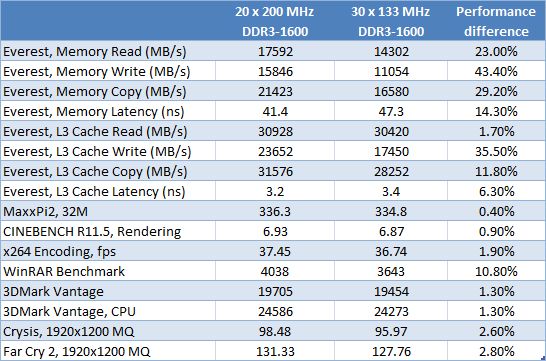
The test results show that the difference in overclocking approaches does affect the performance. And overclocking by raising the BCLK frequency proves to be more rewarding than overclocking using the processor clock frequency multiplier. In fact, it is quite logical, keeping in mind that the clock generator frequency is tied to the frequency of the QPI bus, memory controller and L3 cache. The performance difference is especially dramatic in a synthetic test measuring the memory and L3 cache performance. However, even in real applications overclocking with BCLK frequency produces about 1-2% better performance. Obviously I can’t claim that it is an impressive advantage, but dedicated computer enthusiasts fine-tuning their systems to the utmost extent will definitely appreciate this improvement.
Conclusion
The remarkable thing about the launch of the new Core i7-875K and Core i5-655K processors with unlocked clock frequency multiplier is indeed their launch. I have to admit that the release of inexpensive LGA1156 Intel processors specifically designed for overclocker platforms has the significance of a small revolution. If even Intel acknowledged the existence of overclocking, then it has obviously become a publicly accepted global trend rather than an underground phenomenon. And its adherents have got yet another ready-to-go and simple tool that will allow them to conquer new overclocking heights on the one hand, and win new fans on the other. And in this respect the launch of Intel Core i7-875K and Core i5-655K is an excellent marketing move.
At the same time it is important to understand that processors with unlocked multipliers are merely niche products rather than a mainstream solution. Yes, the use of CPUs like Core i7-875K and Core i5-655K does make it a lot easier to overclock and eliminates special requirements to the rest of the platform. But on the other hand, overclocking regular processors with a locked frequency multiplier when you have to raise the clock generator frequency is also quite fruitful. Therefore, in a general case it doesn’t make real sense to pay extra for unlocked processors, because the only difference between them and overclocker models is in fact in the possibility (or impossibility) to change the multiplier. Especially since overclocking by raising the base clock frequency also provides slightly higher performance.
However, there are specific situations when unlocked processors like Core i7-875K and Core i5-655K can become an irreplaceable part of your system. First, these CPUs will undoubtedly become the users’ first pick for extreme overclocking experiments. Very often when we use advanced cooling methods it is the LGA1156 mainboards that limit significant CPU frequency increase because they can’t ensure system stability at high clock generator frequencies. In this case the unlocked clock multipliers of the new processors are simply a panacea. Second, we can recommend Core i7-875K and Core i5-655K to all commencing overclockers, who do not feel like diving into the depths of system fine-tuning right from the start, which would be the case during overclocking by raising the BCLK clock. And third, unlocked multiplier may come in very handy if the system is based on a mainboard with limited options for worthy overclocking.